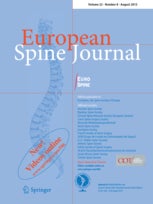Noggin in Spinal Fusion – published in Eur. Spine J.

This study was finally published – we ask whether we could augment BMP activity by reducing the BMP antagonists in spinal fusion surgeries in a rabbit model.
Abstract (pubmed link)
STUDY DESIGN:
Noggin protein levels and spinal fusion rates were compared in a rabbit model after application of siRNA against BMP antagonist noggin in paraspinal muscle.
OBJECTIVE:
To test whether endogenous BMPs are sufficient to form bone in the absence of their antagonists, using noggin siRNA to interrupt the negative feedback loop on endogenous BMP within the paraspinal muscles in rabbits. Unused Posterolateral lumbar fusion is a standard surgical treatment for many spinal disorders, yet even under ideal conditions the rate of non-fusion approaches 25 %. BMPs are effective in promoting bone formation, and are inhibited by antagonists such as noggin. We have previously shown that in this model, endogenous BMPs are present and endogenous BMP antagonist noggin is strongly increased during spinal fusion. Previous studies have found that noggin siRNA enhanced spinal fusion in combination with supra-physiological amounts of exogenous BMP; however, the effect of the siRNA alone remains unknown.
METHODS:
A posterolateral intertransverse rabbit lumbar fusion was utilized, as established by Boden et al. SiRNA against noggin was electroporated into paraspinal muscle to determine its effect on fusion. Outcome measures included noggin protein expression, and assessment of spinal fusion at 6 weeks.
RESULTS:
SiRNAs were effective in reducing overexpressed noggin in vitro. Noggin protein was successfully knocked down in vivo for the initial 7 days in our rabbit model and returned to detectable levels by 4 weeks and to normal levels by 6 weeks. The overall fusion rate was not significantly enhanced compared to established controls from our earlier work (Tang et al.).
CONCLUSIONS:
Early noggin suppression does not appear to enhance the BMP activity sufficiently to significantly affect final fusion rates in our model.
